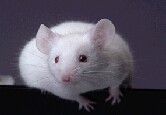
FRIDAY, July 2 (HealthDay News) — High levels of oxygen may slow the development of wrinkles by reducing skin damage caused by ultraviolet B (UVB) radiation from the sun – at least in mice, Japanese researchers report.
University of Tokyo researchers found that hairless mice placed in an oxygen chamber after exposure to UVB rays developed fewer wrinkles and had less evidence of skin damage than hairless mice exposed to UVB rays that didn’t spend time in the oxygen chamber.
In addition to a control group of eight hairless mice who were not exposed to UVB radiation, researchers studied two groups of mice exposed to a UVB radiation-emitting light three times per week for five weeks. One group of eight mice received the radiation but no oxygen treatment, and the other group of eight was exposed to ultraviolet B and then placed in an oxygen chamber for two hours after each irradiation.
The mice in both groups exposed to UVB radiation developed wrinkles and thickened outer skin, but both conditions were more prominent in the group that didn’t receive the oxygen treatment, researchers found.
The study appears online June 29 in the American Journal of Physiology — Regulatory, Integrative and Comparative Physiology.
It’s not known whether high levels of oxygen would have the same effect on human skin exposed to UVB rays. Further studies are required, said the researchers in a news release.
Currently, the best way for people to avoid UVB ray-related wrinkles is to use sunscreen, wear protective clothing and take other measures to protect their skin from the sun.
More information
The U.S. Food and Drug Administration outlines how to protect your skin from the sun.

